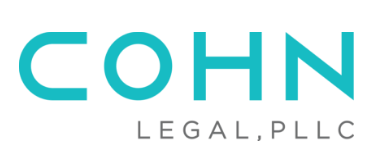Introduction
The explosion of online shopping has provided consumers with unparalleled convenience, but it has also given rise to a significant problem: the proliferation of counterfeit products. From imitation designer bags to fake pharmaceuticals, counterfeit goods pose risks not only to businesses but also to consumer safety. To address this issue, policymakers have introduced the Stopping Harmful Offers on Platforms by Screening Against Fakes in E-Commerce (SHOP SAFE) Act. This legislation is designed to hold online marketplaces accountable for ensuring that third-party sellers do not distribute counterfeit items, thereby strengthening protections for both businesses and consumers.
The Growing Issue of Counterfeit Goods in E-Commerce
Counterfeit sales are estimated to cost the global economy over $500 billion annually, with the United States experiencing a large share of these losses. Unauthorized replicas and fraudulent products frequently infiltrate online marketplaces, causing harm in multiple ways:
- Intellectual Property Violations: Businesses invest significant time and resources in creating original products, only to have counterfeiters exploit their trademarks.
- Consumer Safety Hazards: Fake pharmaceuticals, cosmetics, and electronic goods can be dangerous, leading to health and safety concerns.
- Economic and Tax Revenue Losses: Small businesses and legitimate retailers struggle to compete with counterfeiters, who often evade taxes and operate outside the law.
What the SHOP SAFE Act Proposes
The SHOP SAFE Act was introduced to impose stricter regulations on e-commerce platforms and to reduce the circulation of counterfeit goods. The bill proposes that online marketplaces take proactive steps to verify sellers and eliminate fraudulent listings.
Key Elements of the SHOP SAFE Act:
- Identity Verification for Sellers: Marketplaces must conduct thorough identity checks on all third-party sellers to prevent anonymous counterfeit sales.
- Enhanced Intellectual Property Protections: Sellers must provide proof that they have legal authorization to distribute branded products.
- Liability for Non-Compliance: If platforms fail to meet these requirements, they could be held responsible for counterfeit goods sold through their services.
- Better Mechanisms for Reporting Counterfeits: The bill encourages marketplaces to create efficient systems for identifying and removing counterfeit listings.
Effects on Online Retail Platforms
The enactment of the SHOP SAFE Act would have significant implications for major online marketplaces such as Amazon, eBay, Walmart Marketplace, and Etsy. These platforms rely heavily on third-party sellers, making compliance with these regulations both crucial and challenging.
Potential effects include:
- Higher Operational Costs: Companies may need to invest in stronger fraud detection and seller verification tools.
- Greater Consumer Trust: Enhanced protections against counterfeit goods could lead to increased confidence in online shopping.
- Legal Risks for Non-Compliant Platforms: E-commerce sites that do not adhere to these requirements could face lawsuits and financial penalties.
The Role of Businesses and Industry Associations
Many brands and industry organizations have expressed support for the SHOP SAFE Act, citing its importance in protecting intellectual property and business investments. Groups like the International Trademark Association (INTA) and the American Apparel & Footwear Association (AAFA) have actively advocated for stronger measures against counterfeit sales.
Brands, especially in industries such as fashion, technology, and consumer goods, have already been implementing their own strategies to prevent counterfeit sales, including:
- AI-powered counterfeit detection software
- Blockchain-based authentication technology
- Partnerships with regulatory and law enforcement agencies
Concerns and Opposition to the SHOP SAFE Act
Despite its intended benefits, the SHOP SAFE Act has faced pushback from various stakeholders:
- Small Online Sellers: Independent sellers worry that the bill’s verification requirements could be overly burdensome.
- E-Commerce Companies: Some platforms argue that the law imposes excessive liabilities, despite their ongoing efforts to combat counterfeits.
- Legal Analysts: Some experts suggest that the bill could lead to an increase in legal disputes and unintentionally restrict fair competition.
What Lies Ahead for Trademark Protection and E-Commerce
As counterfeit sales continue to rise, legislative efforts like the SHOP SAFE Act will likely remain a focal point in discussions about online commerce. Regardless of whether this specific bill is enacted, e-commerce platforms, businesses, and consumers will need to remain vigilant against counterfeit goods.
Steps Online Marketplaces Can Take Now:
- Implement AI-driven counterfeit detection systems
- Strengthen verification processes for sellers
- Collaborate with law enforcement to enforce IP rights
How Consumers Can Avoid Counterfeit Goods:
- Shop directly from official brand websites
- Check product and seller reviews before purchasing
- Report suspicious listings to online platforms
Conclusion
The battle against counterfeit goods is ongoing, but the SHOP SAFE Act represents a potential turning point in strengthening protections for businesses and consumers. While challenges remain in its implementation, the growing push for stronger intellectual property safeguards signals a shift toward a safer and more reliable e-commerce ecosystem. In the meantime, businesses and shoppers alike must stay informed and proactive in identifying and avoiding counterfeit goods.
Speak with a Trademark Attorney
Please feel free to reach out and request to speak with one of our trademark attorneys to discuss your case.
Have a question? We want to know. Contact a Trademark Lawyer today.

